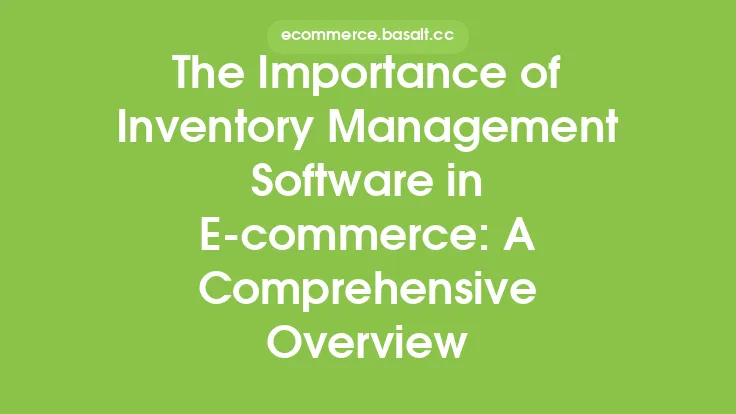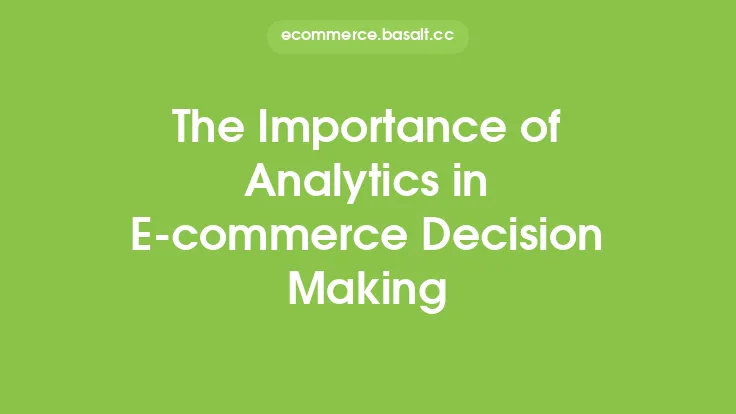In today's fast-paced and constantly evolving e-commerce landscape, adaptability has become a crucial factor in determining the success of online businesses. The ability to adapt to changing market conditions, consumer behaviors, and technological advancements is essential for e-commerce companies to stay ahead of the competition and achieve long-term sustainability. In this article, we will explore the importance of adaptability in the e-commerce industry and discuss the key strategies that businesses can employ to stay adaptable and thrive in this dynamic environment.
Understanding the Need for Adaptability
The e-commerce industry is characterized by rapid change and uncertainty, with new trends, technologies, and consumer preferences emerging all the time. To stay relevant and competitive, e-commerce businesses must be able to adapt quickly to these changes and respond to shifting market conditions. This requires a flexible and agile approach to business, with a willingness to experiment, innovate, and pivot when necessary. Companies that fail to adapt to changing circumstances risk being left behind and losing market share to more agile and responsive competitors.
Key Drivers of Change in E-commerce
So, what are the key drivers of change in the e-commerce industry that require businesses to be adaptable? Some of the most significant factors include changing consumer behaviors and preferences, advances in technology, shifts in market trends and competitor activity, and evolving regulatory requirements. For example, the rise of mobile commerce and social media has created new opportunities for e-commerce businesses to reach and engage with customers, but it also requires companies to adapt their marketing strategies and tactics to effectively leverage these channels. Similarly, the increasing use of artificial intelligence and machine learning in e-commerce requires businesses to develop new skills and capabilities to stay ahead of the curve.
Strategies for Adaptability in E-commerce
So, how can e-commerce businesses cultivate adaptability and stay ahead of the competition? Some key strategies include embracing a culture of innovation and experimentation, investing in ongoing learning and development, fostering a flexible and agile organizational culture, leveraging data and analytics to inform decision-making, and building strong relationships with customers and partners. By adopting these strategies, e-commerce businesses can develop the adaptability and resilience needed to thrive in a rapidly changing environment. For example, companies like Amazon and Alibaba have demonstrated a willingness to experiment and innovate, with a focus on leveraging new technologies and business models to stay ahead of the competition.
The Role of Technology in Enabling Adaptability
Technology plays a critical role in enabling adaptability in e-commerce, providing businesses with the tools and capabilities needed to respond quickly to changing market conditions. Some of the most important technologies for adaptability include cloud computing and scalable infrastructure, artificial intelligence and machine learning, data analytics and business intelligence, and digital marketing and social media platforms. By leveraging these technologies, e-commerce businesses can develop the agility and responsiveness needed to stay ahead of the competition and achieve long-term success. For example, companies like Shopify and Magento have developed flexible and scalable e-commerce platforms that enable businesses to quickly adapt to changing market conditions and consumer preferences.
Building an Adaptable Organization
Building an adaptable organization requires a fundamental transformation in the way that e-commerce businesses operate and make decisions. It requires a culture of innovation and experimentation, with a willingness to take risks and try new things. It also requires a flexible and agile organizational structure, with a focus on empowering employees and teams to make decisions and respond quickly to changing circumstances. By building an adaptable organization, e-commerce businesses can develop the resilience and responsiveness needed to thrive in a rapidly changing environment. For example, companies like Zappos and Warby Parker have developed strong company cultures that emphasize innovation, experimentation, and customer-centricity, enabling them to stay ahead of the competition and achieve long-term success.
Measuring and Evaluating Adaptability
Finally, how can e-commerce businesses measure and evaluate their adaptability, and identify areas for improvement? Some key metrics and indicators include time-to-market for new products and services, customer satisfaction and retention rates, employee engagement and turnover rates, and revenue growth and profitability. By tracking these metrics and indicators, e-commerce businesses can assess their adaptability and identify areas where they need to improve. They can also use data and analytics to inform decision-making and drive continuous improvement, enabling them to stay ahead of the competition and achieve long-term success. For example, companies like Netflix and Airbnb have developed sophisticated data analytics capabilities that enable them to track key metrics and indicators, and make data-driven decisions to drive growth and innovation.





